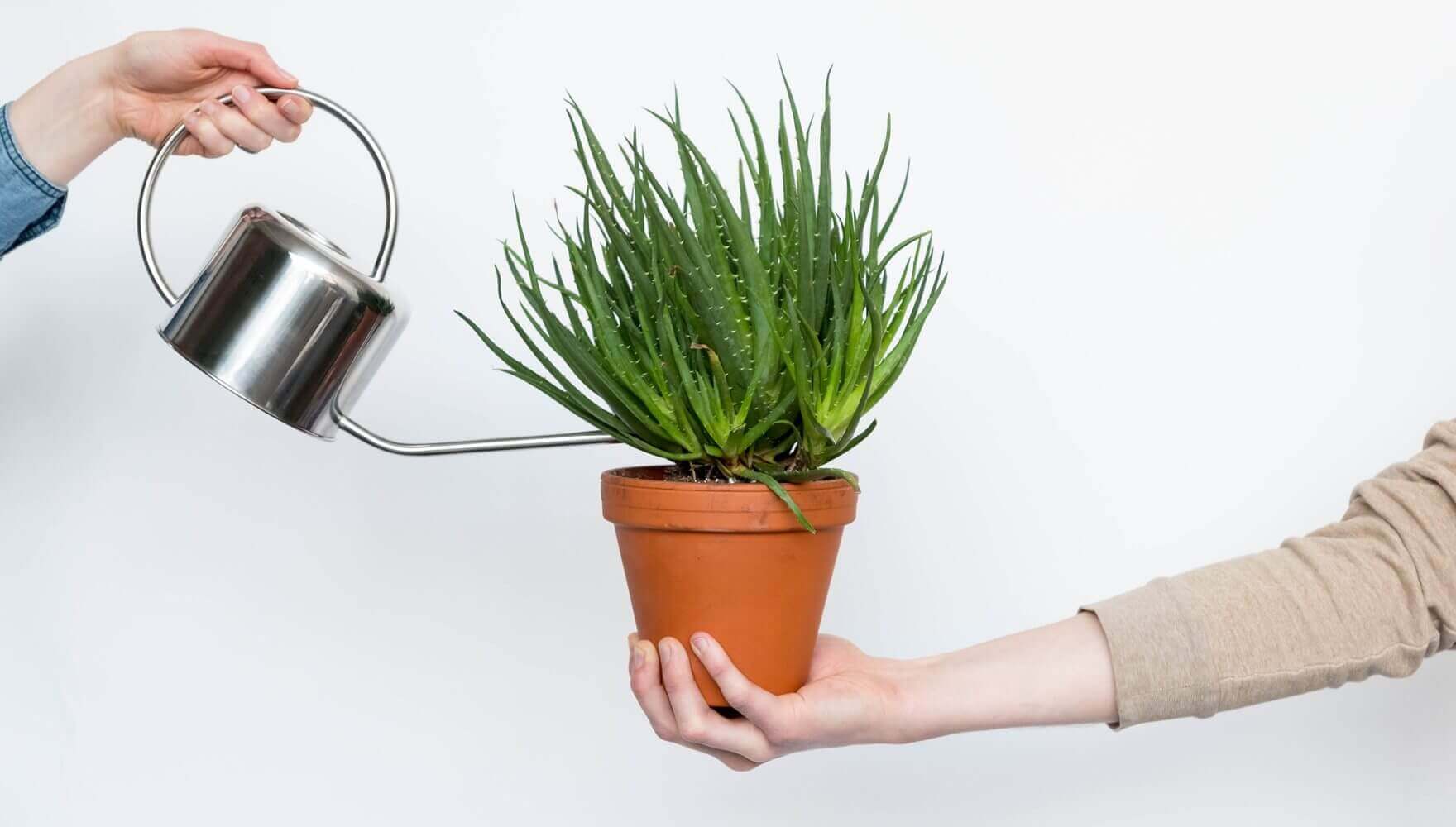And how are you doing with watering? You could call it the crucial question of the community. While some prefer clear, weekly watering intervals, others prefer to stick a finger into the upper layers of soil. Read this article to find out what you should bear in mind when watering and what your finger or a scale might have to do with it.
What makes plants so human?
When it comes to drinking, plants are not so different from us humans. While some only drink sparingly, others can easily swallow three litres a day(you'd better have a sip on that too - cheers!). The situation is similar for plants: Like us humans, plants also need enough water for their smallest structural unit, namely the cell, to maintain various functions. As with us, the need for water changes according to age, season and growth. This means that a generalised amount of watering for your plant is hardly reliable in the long term in order to supply it with its fluid requirements. So that you don't under- or over-water them, I have summarised various methods in this article that will help you to get a feel for your plants' thirst!
The substrate sets the pace!
Most watering recommendations that are given with the purchase of a plant only contain pictographic guidelines that leave a lot of room for interpretation. I therefore believe that these should only be taken as a guide to the thirst of your plant. Your attention should initially be focussed on the plant's substrate, as this has a weighting that should not be underestimated when it comes to watering your plant. If a soil mixture is more permeable and coarser-grained, it will store less water and prevent waterlogging, especially in the case of overwatering. If your substrate contains more soil or more absorbent components such as sphagnum moss, it will store more water. Consequently, you should water the plant less often. This comparison shows that you can also influence your watering frequency to some extent with the soil mixture, provided that a plant allows it.
Under & over pot vs. over pot only.
In addition to the importance of the substrate, the container in which you keep your plant also plays a major role. While most plant keepers keep their plants in a pot with holes (preferably transparent pots in the plant community) and then place it in a pot without holes, it is also possible to plant your plants directly in a pot without holes.
Saucer & planter.
The saucer with the holes allows the water to drain away with each watering and thus prevents waterlogging. Even with this method, it is advisable to wait a further 5-10 minutes after watering and only then empty the excess water from the planter to ensure sufficient watering even with very permeable substrate mixtures.

Cachepot only.
Another variant, in which the plant is planted directly in a cachepot without a hole with a substrate, is particularly suitable if you cannot find a suitable saucer for your cachepot. And this is a well-known dilemma among all those who do not want to compromise on the aesthetics of their home furnishings and plant keeping, because it is usually the most beautiful planters that the transparent saucers do not want to fit into.

Expanded clay for additional drainage.
The main disadvantage of planting directly into pots without a drainage hole is the risk of overwatering, because unlike the first option, the water that has been poured no longer has the opportunity to leave the pot. You therefore need to be particularly careful with this method and know how thirsty your plant is. In order to prevent waterlogging as far as possible, it is particularly advisable to ensure additional drainage in the bottom 2cm of the pot using expanded clay, so that a small buffer can be created for watering errors (more on this in another article).

Watering sensors, fingers or scales?
Many companies have recognised that watering plants has destroyed many a relationship with plants and have brought suitable sensors onto the market. However, these are not so popular with everyone in the community and still face a few hurdles that they find difficult to overcome. They usually measure humidity, which they equate with a reference value and indicate when a plant should be watered. However, there are some phenomena that most people are unfortunately still unable to grasp, such as the uneven distribution of water within the pot or the changing water requirements of a plant as the seasons change.
In order to still be able to water your plant optimally, I recommend that you consider the following two options:
1. put your finger in the soil:
The classic within the community, and for good reason:
Stick your finger approx. 1-3 cm deep into the soil - once it is dry, you can water your plant. This method is suitable for most aroids that are celebrated by the community. As the top layers of soil dry out, overwatering is usually prevented and still allows a sufficient watering interval.
The disadvantage of this method is that the upper layers of soil do not always provide sufficient information about what is happening in the innermost soil ball and the lower layers. Particularly in rooms with low humidity, there is a tendency for the upper layers to evaporate water prematurely, giving the appearance of further watering without it being necessary for the plant.
Short & sweet
| PRO | CO |
|
|
2nd scale or even just a little "feel".
Another method, which I personally prefer, can almost be described with a term, namely "Gspüri". Once you have developed a feel for the thirst of your plants, you will be able to successfully keep any plant in any container.
One way to improve your feeling for watering is to regularly lift your plants and the pot they are in - before watering, immediately afterwards and again a few days later. The weight of the water alone will tell you how much water is still in the pot and how quickly the plant can absorb it. You should also remember the difference, especially when the seasons change, as you will see how much the water requirement changes depending on the weather.
If you can't tell the difference between lifting and lowering, a scale can of course also show this phenomenon in figures and make it particularly visible to you. It can be quite difficult at first - I'm well aware of that - but I'm convinced that over time you'll be able to do it with the left or the right!
Your "intuition" will develop quickly and soon you will realise even without lifting when your babies are thirsty again, because the leaves, the stems and the overall appearance of your plant also show quite quickly whether it could use another "Gutsch", depending on the species :-)
Short & sweet:
| PRO | CO |
|
|
- David von planting with david

